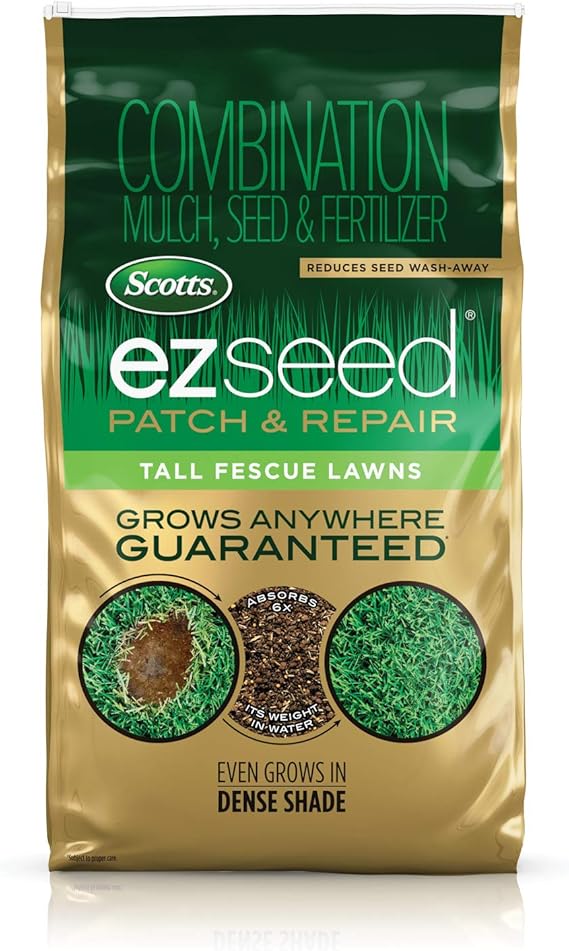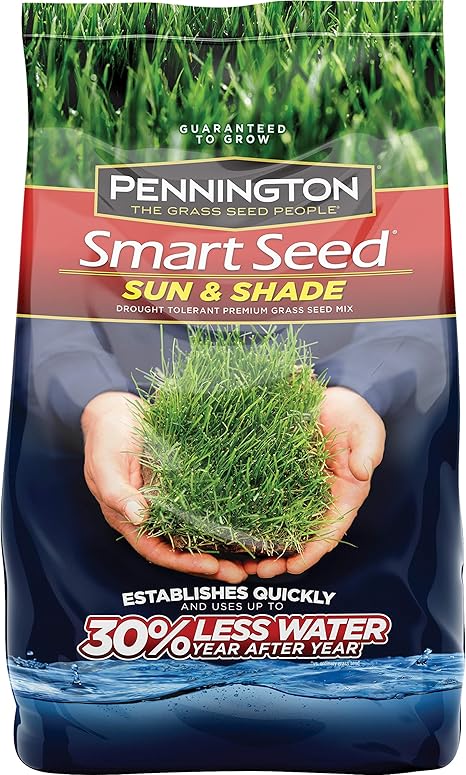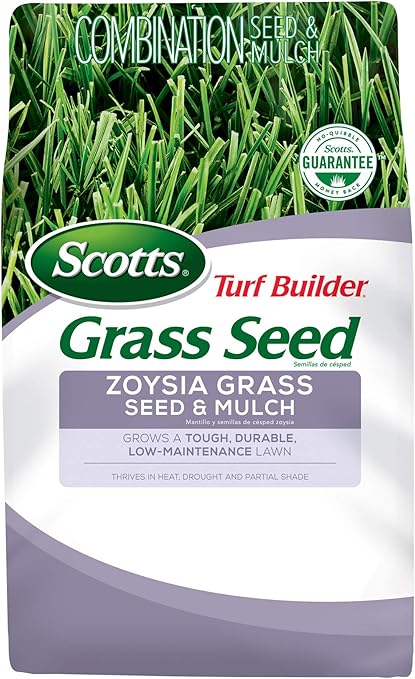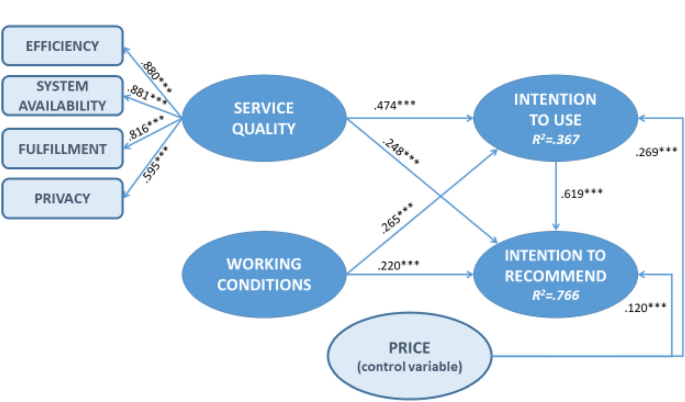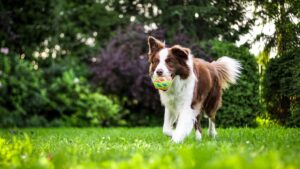
Best Grass for Dogs 2021 – Updated by Burbro Editors on April 14th, 2021
When you have pets on your lawn, the lawn may begin to die over time. The damage is often caused because your dogs are urinating on the lawn, which is ‘burning’ the lawn and leaving urination spots scattered across your lawn. While there are many ways to protect your lawn, one of the best ways to prevent lawn damage from dogs is by choosing the best grass seed for dogs. Some grass breeds are too sensitive for dogs, so you may need to reseed your lawn with hardier grass. (Best Grass for Dogs 2021 )
If you’re looking for the best type of grass for dogs, you’ll want to look for grass that has a rapid growth rate, so the lawn grows back quickly after being damaged. You’ll also want to look for grass with a deep root system so the dog’s urine doesn’t get absorbed by the roots and kill the grass. You’ll also need to look for grass that’s rated for your climate to ensure that the weather doesn’t kill your lawn. In this product review, we’ll be reviewing the best types of grass for dogs, so let’s jump in!
Best Grass for Dogs 2021 from Seed
If you’re looking for the best grass that can survive damage from dogs and other pets, you’ve come to the right place. We’ve reviewed the best grass seed types and compiled a shortlist of the best products that you can use.
Here are the Best Types of Grass for Dogs in 2021.
- Best Kentucky Bluegrass for Dogs: Scotts Kentucky Bluegrass
- Best Perennial Ryegrass for Dogs: Scotts Perennial Ryegrass
- Best Fescue Grass Seed for Dogs: EZ Fescue Grass Mix
- Best Grass Seed for Shady Areas: Pennington Smart Seed Mix
- Best Zoysia Grass for Dogs: Scotts Zoysia Grass Seed
1. Scotts Kentucky Bluegrass
Best Kentucky Bluegrass for Dogs.
One of the best breeds of grass seed for lawns with dogs is Kentucky Bluegrass, and specifically Scotts Kentucky Bluegrass. Scotts Kentucky Bluegrass is a Turf Builder grass seed mix that self-repairs and withstands extreme wear and tear. It also creates a thick, durable lawn that’s comfortable to stand on and is perfect for high-traffic areas. Their Kentucky Bluegrass mix is designed for full sun and low shade, making it perfect for areas with dogs. The grass is a fine-bladed grass with a nice texture and is also drought resistant. A single 7-pound bag of Scotts Kentucky Bluegrass can seed an area larger than 4,500 sq. ft. Best Grass for Dogs 2021
2. Scotts Perennial Ryegrass
Best Perennial Ryegrass for Dogs.
If you’re trying to protect your lawn from your dog, you may want to try seeding your grass with high-quality grass seed like the Scotts Perennial Ryegrass Seed. The Perennial Ryegrass has a fine blade texture and is drought resistant. It’s also intended for full sun and some light shade, making it perfect for large play areas, dog runs and dog parks. One of the nice things about Perennial Ryegrass is that it establishes quickly and is ideal for high-traffic areas. A single 7-pound bag of Scotts Perennial Ryegrass can seed an area that’s 2,900 square feet in size.
3. EZ Fescue Grass Mix
Best Fescue Grass Seed for Dogs.
While we chose to review the EZ Fescue Grass Mix, we also recommend the Scotts Fescue Grass Seed as one of the best fescue grasses for lawns with dogs. The EZ Fescue Grass Mix is a combination of Fescue grass seed, mulch, and fertilizer designed to help the grass grow wherever you place it. This grass seed mix is designed to grow in full sun, shady areas, high-traffic areas and slops. The mulch in this grass seed mix is designed to absorb 6X its weight in water, and it slowly releases the water to the seed and creates a moist layer around the seed that helps the grass to get established. A single 10-pound bag of EZ Fescue Grass can seed an area that’s 225 square feet in size.
4. Pennington Smart Seed Mix
Best Grass Seed for Shady Areas.
If you’re trying to re-seed a shady area, we recommend using the Pennington Smart Seed Mix. The Smart Seed Mix is a mixture of tall Fescue grass seed and Perennial Ryegrass seed. While the bag says that this grass seed is designed for sun and shade, we found that it’s best in shady areas, and it doesn’t germinate well in sunny areas. The Pennington Smart Seed Mix is drought, heat, and disease resistant and requires little maintenance once established. A single 20-pound bag of the Pennington Smart Seed Mix will cover an area that’s 6,600 square feet in size.
5. Scotts Zoysia Grass Seed
Best Zoysia Grass for Dogs.
The Scotts Zoysia Grass Seed is a versatile seed mix that combines mulch and Zoysia grass seeds that create a lawn that’s damage resistant, durable and 99.9% weed-free. This grass seed mix can be planted in full sun or slightly shady areas and is the perfect grass for large areas, play parks, and dog runs. This grass seed is also drought-resistant and thrives in hot, dry climates. A single 5-pound bag of the Scotts Zoysia Grass Seed can seed an area that’s 2,000 square feet in size. This type of grass seed is intended for southern climates.
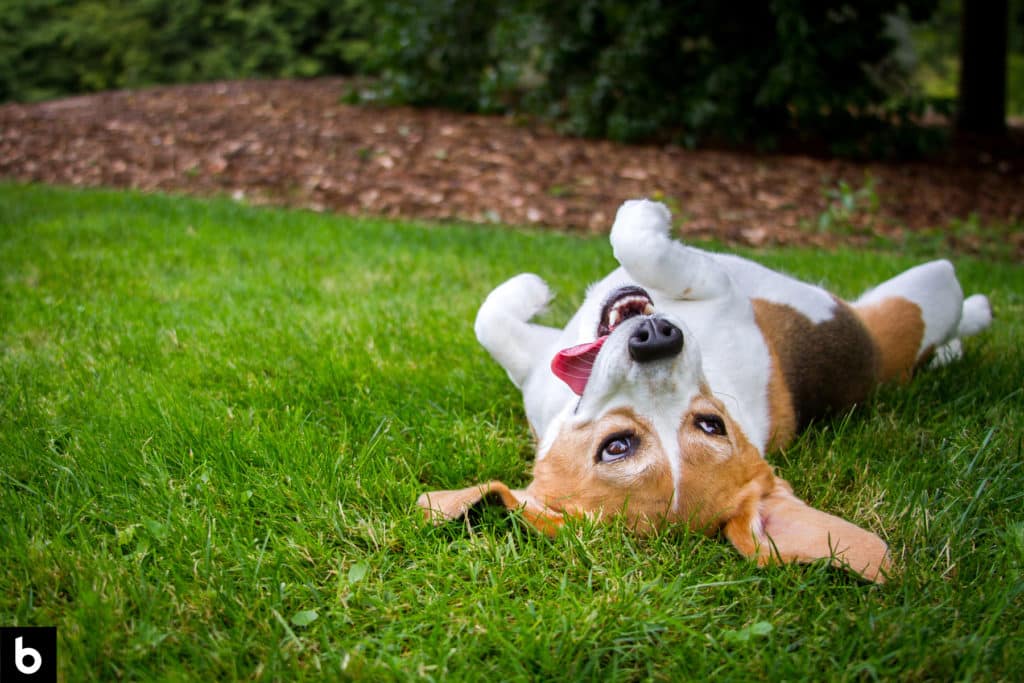
Types of Grass Seed that are Suitable for Dogs
If your dog is killing your grass, it may be that your grass is too sensitive for dogs and so you’ll need to change the type of grass that you’re using so you can be a pet owner with a lush lawn that’s green, thick and healthy.
Here are some of the grass breeds that do well with dogs.
1. Kentucky Bluegrass
The Kentucky Bluegrass is one of the hardiest grasses that you can find, and it thrives through some of the harshest growing conditions. It has a rapid growth rate, is hardy by nature and revives itself when damaged. The Kentucky Bluegrass is perfect for high traffic areas because it repairs itself once stepped on or worn down. If you’re in cooler climates, you’ll want to use the Kentucky Bluegrass because it’s designed for harsher climates with cooler temperatures.
2. Perennial Ryegrass
If you want a robust breed of grass, you’ll want to go with the Perennial Ryegrass. They have a strong root system, which helps the grass get established quickly and begin growing in a short period. It creates a thin blade of grass that’s durable, tough and easy to maintain. The Perennial Ryegrass is also rated for cooler climates and can withstand the winter climates.
3. Fescue Grass
When it comes to Fescue grass, there are many breeds and varieties. You’ll need to choose a Fescue variety suitable for your climate so the grass can withstand the weather in your area. However, the Fescue breed is extremely tough and hardy and is known for its moisture absorption, which fights off the effects of having a dog on your lawn. Most Fescue Grasses can be grown in areas with a mix of sun and shade.
4. Bermuda Grass
The Bermuda Grass is a popular choice for those living in warmer climates because it’s a tough grass that thrives in the heat. The Bermuda Grass also requires little attention or watering, perfect for homeowners who want a care-free lawn for their dog. The Bermuda grass is also good at repairing itself, making it perfect for high traffic areas.
With Bermuda grass, you’ll need to know that the grass will go dormant during the winter months and becomes a brown tone. If the weather goes below 55F, the Bermuda grass will go dormant and come back to life when the weather becomes warm again.
5. Zoysia Grass Seed
If you’re looking for a premier grass for your home, you’ll want to go for the Zoysia Grass. With Zoysia, you’ll have a lush lawn that’s thick, healthy and comfortable to walk through. The Zoysia grass is drought tolerant and hardy, making it perfect for homeowners across the country. However, Zoysia Grass requires several years to get its root system fully established before you can leave the grass alone and let it grow by itself without watering and regular care.
Tips for Protecting your Lawn from Dog Urine Spots
The type of grass you have on your lawn is a huge factor in creating a healthy lawn as a pet owner. However, you can help protect your lawn from getting damaged by your pets.
When the dogs’ pee, their urine often contains nitrogen, which can help plants, but when there are excessive amounts of nitrogen in a single area, it can burn the vegetation and kill the plants. This is why you see ‘urine spots’ across your lawn with little circles of brown grass that your dog has killed.
Your dog’s poop can also cause the grass to die if there’s too much nitrogen in the dog’s feces. If the dog poop sits on the ground for too long, it’ll end up killing the grass. This problem isn’t as bad as urine spots because you can merely ‘poop scoop’ more often and remove the problem.
Here are some tips for protecting your lawn from your dog.
- When your dog urinates, remember to water down the area where your dog relieved itself. By diluting your dog’s urine, you’ll prevent the grass from absorbing too much nitrogen and getting burnt.
- Always ‘poop scoop’ every week so you remove any dog poop that may be on your lawn and killing the grass. While the dog poop will deteriorate by itself, it often takes too long to deteriorate, and it’ll kill the grass before it’s gone.
- Encourage your dog to enjoy various portions of your yard. If you have a large yard, there’s no reason that the dog should be killing an area of grass near the front of your house.
- If you know of any area of your lawn where the grass doesn’t grow well, try to encourage your dog to urinate there. You might as well take advantage of poor growth areas by rewarding your dog for relieving itself near that area.
- You can also create a designated area for your dog to poop and urinate. If you have a large stone or pole in your yard, you may want to reward your dog for urinating on the rock or pole instead of the grass. When your dog urinates on the pole or rock, it’ll prevent the urine from reaching the grass, and it won’t kill your grass.
- You can also create a small designated poop area for the dog and train the dog to only relieve itself in that area by heavily rewarding it when it urinates in that area of the yard.
- To create a designated urination area for your dog, you’ll want to dog out the grass and fill it with pea gravel so the urine doesn’t kill the grass. It’ll also make it easier to ‘poop scoop’ because it’ll be in one area instead of scattered across your yard.
- You can also protect your lawn by preventing your dog from running across the grass when it’s wet. When the grass is wet, it becomes softer and can easily get torn up by a large that’s running across the lawn.
Frequently Asked Questions (FAQs)
In this section, we’ll try to answer some of the frequently asked questions surrounding grass for dogs.
Here are some of the frequently asked questions we encountered.
1. What Can I Use Instead of Grass for My Dog?
One of the issues of having a dog as a homeowner is that your lawn will likely develop brown urine spots caused by your dog urinating on your lawn. If you’re looking for ways to landscape your yard without using grass, there are options for you,
For green lawns that are dog-friendly, you’ll want to consider:
- Clover Plants – Clover plants are tougher to kill than grass and will be more resistant to developing urine spots. The clover plants are also dog-friendly, making them perfect for any dogs that may eat the clover plants.
- Synthetic Turf – You can also use artificial turf to prevent your dog from ruining your grass with urine spots. The urine will drain through synthetic turf, just like the rainwater, without killing your lawn. It will also reduce other work like mowing your grass, picking weeds, or replacing urine spots on your lawn. You’ll also find that your dog won’t dig when you’re using synthetic turf.
- Durable Grass Blends – You may also want to use a grass blend that’s more resistant to urine spots. You can use grasses like Kentucky BlueGrass, Perennial Ryegrass. Fescue Grass, Bermuda Grass, Or Buffalo Grass to prevent urine spots on your lawn.
For dog-friendly areas without grass, you may want to consider:
- Stone Dog Areas – If you want to create a ‘designated urine area’ for your dog, you may want to cover the area with smooth stones. This will enable the urine to disappear into the ground without killing your lawn. With this method, you’ll need to train your dog to urinate in the designated area.
- Mulch – You can also use a mulch to cover the ground in the designated urination spot. With mulch, you’ll have a safer option for your dog, and it’s inexpensive compared to using smooth stones. If you use cedar mulch, you’ll get added benefits because the cedar mulch acts as a natural bug repellent for pets.
2. How Do I Grow Grass for My Dog?
When you’re growing grass for a dog-friendly lawn, you’ll want to start by using grass seed that’s resistant to dog urination spots so the lawn. You can use hardy grasses like Kentucky Bluegrass, Fescue Grass, Bermuda Grass, Perennial Ryegrass, or Buffalo Grass because these grasses will be more resistant to urination spots.
You’ll want to plant your lawn and prevent your dog from entering your lawn until the grass is established. When the grass blades are young, they’ll be easy to tear up by your pet, leaving your lawn looking patchy and dug up.
The grass seeds can also be a problem for your pet. First off, they can get lodged in your pet’s hair, causing them to feel irritated. The seeds can also get stuck in your dog’s paws or skin, creating bigger issues.
We recommend planting your grass and keeping your dog from entering the lawn until the grass is established. Allow the blades of grass to thicken, so they can’t be ripped out as your dog plays on your lawn. You’ll also want the grassroots to develop and grow deeper into the ground so your dog’s urine won’t immediately kill your lawn.
3. Can Eating Grass Kill Dogs?
It’s unlikely that your dog will die from eating grass unless they eat grass that has been sprayed with harmful chemicals. Most dogs will eat grass for various reasons, including getting nutrients in their diet, so it’s normal for your dog to eat grass.
However, if you’ve sprayed your lawn with chemicals such as weed killer, you’ll want to prevent your dog from playing on the lawn until the chemicals have had a chance to evaporate. We recommend using weed killer several hours before it rains so the chemicals can kill the weeds and get washed away by the rain.
4. Can Dogs Walk on New Grass?
If you’ve just finished planting grass, you’ll want to prevent your dog from walking on the young grass shoots until the grass has had a chance to develop. The young grass shoots are thin and can be easily torn up since they don’t have a solid root system.
We recommend planting your grass and keeping your dog off the lawn until the blades of grass have thickened, and the grass develops roots. You can water your lawn frequently and add fertilizer to your lawn to speed up the process.
Summary
We hope this article has helped you find the best grass seeds for lawns with dogs. If you’re new to having lawns damaged by dogs, there are a few things to consider when you’re buying grass seed for your yard. First off, you’ll want to consider your climate zone. If you’re in a cooler climate, you’ll want to choose a grass seed that’s rated for your climate. If you’re in a hotter climate, you’ll want to choose a tougher grass seed and drought resistant. You’ll also want to use grass seed that prefers the sun if you’re in a warmer climate. Best Grass for Dogs 2021
You’ll also need to consider the area where the grass will be planted. Some grass seed types love the sun, and they need to be planted in sunny areas to thrive. On the other hand, some types of grass seed like to be planted in the shade. Some seed mixtures thrive in a mix of sun and shade. If you’re planting grass in your yard, you’ll need to determine if it’s sunny or shady and choose a type of grass seed that’s perfect for your yard’s weather conditions. We recommend looking for grass seed that comes with mulch and fertilizer. The mulch is designed to absorb more water and slowly release it to the seed as the seeds begin to dry out. The fertilizer is designed to give the seeds the nutrients they need and prevent disease. When you combine young seeds with mulch and fertilizer, you’ll get a combination that’s guaranteed to succeed.



